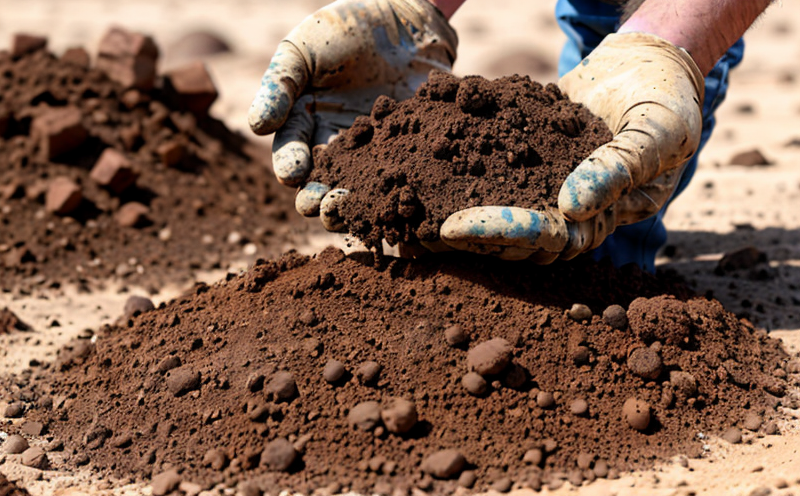ASTM D2850 Unconsolidated Undrained Triaxial Compression Testing
The ASTM D2850 standard specifies a method for determining the strength and deformation behavior of unconsolidated, undrained soil specimens under triaxial stress conditions. This test is particularly useful in mining applications where the stability and performance of overburden materials are critical to ensuring safe and efficient operations.
The test simulates real-world loading conditions by applying a combination of axial and confining pressures on cylindrical specimens of soil and overburden. The specimens are not allowed to consolidate before testing, which makes this method ideal for analyzing the behavior of unconsolidated materials under static or quasi-static conditions. This can be especially relevant in mining environments where disturbances such as excavation or blasting may cause temporary changes in material properties.
The test is conducted using a triaxial compression cell equipped with sensors to measure axial strain, radial strain, and pore water pressure. The specimen is subjected to an initial confining pressure followed by an increase in axial stress while the pore water pressure is maintained constant. The resulting deformation and strength parameters are recorded.
The results of ASTM D2850 testing can be used to predict the behavior of unconsolidated materials under various loading conditions, which is crucial for designing support structures and excavation plans. Engineers and geologists rely on these tests to ensure that overburden material will perform as expected during mining operations.
The test procedure ensures consistency across samples by standardizing the preparation and conditioning of specimens according to ASTM D2850 guidelines. This is important in a sector like mining, where variations in soil and rock properties can significantly impact project outcomes.
- Consistent specimen preparation
- Standardized testing conditions
- Pore water pressure maintenance
- Detailed deformation and strength data
The test is particularly useful for mining operations where the stability of overburden materials plays a critical role in ensuring safety and efficiency. By providing detailed information on material behavior under stress, ASTM D2850 helps engineers design safer and more efficient mining projects.
Moreover, this testing method ensures that the materials used are suitable for the intended applications by simulating real-world loading conditions. This is especially important in mining environments where disturbances such as excavation or blasting may cause temporary changes in material properties.
Why Choose This Test
- Predict material behavior under real-world loading conditions
- Ensure safety and efficiency of mining operations
- Comprehensive data on deformation and strength parameters
- Consistent results across samples
- Standardized testing procedures
- Support design decisions for support structures and excavation plans
- Pore water pressure maintenance ensures accurate measurements
The ASTM D2850 test is an essential tool in the mining sector, providing detailed insights into the behavior of unconsolidated materials under static or quasi-static conditions. This information is critical for ensuring that overburden materials will perform as expected during mining operations.
Customer Impact and Satisfaction
The results of ASTM D2850 testing have a direct impact on the success of mining projects by providing detailed insights into material behavior under stress. This leads to safer, more efficient operations and reduces the risk of accidents or structural failures.
Customers in the mining sector benefit from this test by ensuring that their overburden materials are suitable for the intended applications. The consistent and reliable data provided by ASTM D2850 helps engineers make informed decisions about support structures and excavation plans, leading to better project outcomes.
Quality managers and compliance officers can rely on the results of ASTM D2850 testing to ensure that their operations comply with international standards. This not only enhances safety but also improves overall operational efficiency.
Competitive Advantage and Market Impact
The use of ASTM D2850 in mining operations provides a competitive advantage by ensuring that materials are suitable for the intended applications. This leads to safer, more efficient operations and reduces the risk of accidents or structural failures.
By providing detailed insights into material behavior under stress, this test helps engineers make informed decisions about support structures and excavation plans. This not only enhances safety but also improves overall operational efficiency, leading to better project outcomes.
The consistent and reliable data provided by ASTM D2850 ensures that mining operations comply with international standards. This not only enhances safety but also improves overall operational efficiency, giving companies a competitive edge in the market.





